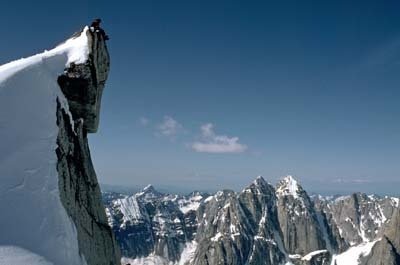Cheers!
--Innocent Byproduct
We exited down below the catwalk, emerging at about the 40-yard line to an eye-level view of the oil tank array. Again, the familiar scent of home heating oil #2 hit my nose. She stopped and stood in silence, looking across the rows of rectangular pits with their round tubular prizes enthroned half-way deep in them like hundred’s of Godzilla-sized eggs nestled on their mothers’ squared-off nests. I watched her and could see she was counting the tanks, even raising her finger in the air to point and to recall for herself which row we needed to take. She made her decision and plowed forward. I followed.
As we walked through I scrutinized the tanks. They were all of an older design from about the mid-1990’s. They also all had a thin but discernable layer of dust on them. The dust worried me because of how flammable dust can be if left to pile up, especially in an industrial environment -- one layer of dust is as good as a layer of gasoline. Up above each tank hung an interspersing of pipe trackings, each fixed at about the height of rose trellises (minus the roses) framed throughout the whole array.
The hundreds of concrete rectangular pits were all about seven feet deep. And the rim of each pit sported its own curved-top metal access ladder, mounted on the lip of the pit and dangling down into it -- industrial cousins of the ladders emerging from in-ground swimming pools. I also noticed that the concrete walls of each pit were marked by a progressing scale of volume measurements that indicated gallons, like the markings on a glass kitchen measuring cup -- thus the depth of an actual leak could be clearly gauged just by glancing at the height of the oil against the volume markers. Each pit’s highest volume marker was 6,000 gallons, thus if any one tank were to rupture, its rectangular pit would easily contain the entire spill with room to spare. And if what she said was true about the concrete being sealed against oil permeation, post-repair cleanup would involve little more than a pump. My only fear was that one or more tanks might be interconnected. If so then one leak could lead to an endless fountain of uncontainable spillage.
She led me across the array, under the many rose-less trellises of pipe, and the scent of oil grew stronger. As we progressed to the near-center of the array, I looked straight up to gawk at the ceiling: it was easily a 100-foot height, possibly higher. I also glanced back at the catwalk of metal grating where the elevators and the control room sat: the control room hovered just a little bit TOO high to have a proper line of sight of the array, which meant the control room was originally built to observe a much taller field of activity. Had I not seen the architect’s rendering framed on the wall of the break room, this tank room’s staggering height and the catwalk’s soaring perch would have seemed like a needless waste of space and poor logistical planning. But the framed drawing betrayed the original intent of this facility as an underground Jersey tank farm. And yet someone somewhere had a change of plans and settled for the smaller freight train-sized tanks instead. While I wasn’t sure of how much even one Jersey tank was capable of holding, I marveled at the notion that this room might almost have been outfitted with six or more of those monsters. So if these “tiny” freight car tanks could collectively hold two-point-two million gallons, I pondered that a full Jersey tank farm probably could have come close to the hundred million gallon mark.
Suddenly, before we reached dead-center of the football field, we turned a corner at one pit. And there it was: the leaking tank. We both stopped and paused to survey it. Now it was her turn to watch me. In a symbolic gesture on her part indicating hands-off resignation to me and my knowledge, she took one step back to allow me some breathing room. I sighed and stepped forth to peer over the edge of the oil-soiled pit.
No longer a mere puddle, the deepening oil currently filled the floor of the pit corner to corner. It was deep enough to where the liquid was a uniform blackness with no transparency at all. I eyed the volume scale and saw that she was indeed correct: 600 gallons, and then some.
.
-------------------End of Chapter 6-c--------------------

